Introduction To Ducks As A Bird Species
When it comes to birds, ducks are probably some of the most recognizable and beloved species in the world. With their colorful feathers and distinct quacking sounds, they have become a well-known symbol of nature and are often featured in children’s books, cartoons, and advertisements. But while most people are familiar with ducks, not everyone knows everything there is to know about these charming creatures. In this post, we’ll delve deeper into the world of ducks, starting with an introduction to ducks as a bird species.
In scientific terms, ducks belong to the family of birds called “Anatidae,” which also includes swans and geese. There are over 120 different species of ducks found all over the world, with the most common ones being the mallard, the wood duck, and the teal. Ducks are found in both freshwater and saltwater, and they can be seen swimming in ponds, lakes, rivers, oceans, and even in urban areas where there is any standing water.
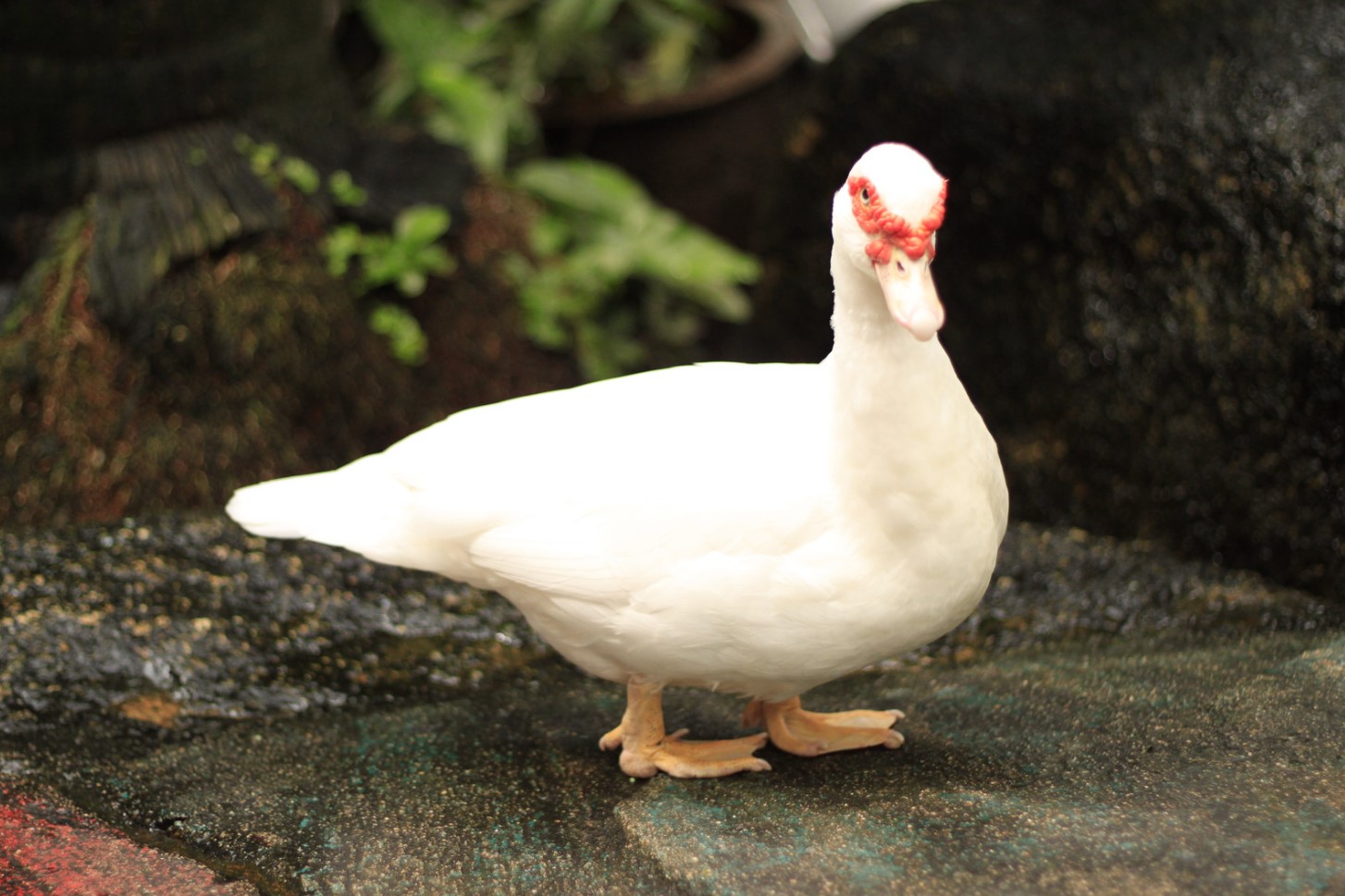
One of the most distinguishing features of ducks is their beak or bill. Unlike most birds, ducks have wide, flat beaks that are adapted for their different feeding habits. Some species of ducks feed on plants and seeds, while others are carnivorous and eat insects, worms, and small fish. Ducks are also excellent divers and can stay underwater for several minutes when foraging for food. With their webbed feet, they can also paddle through the water with ease, making them one of the most agile birds in the water.
- The most well-known and popular species of duck is the mallard. These birds are found all over the world and are recognizable by their green head and white collar.
- Ducks are closely related to geese and swans, and all three species are collectively known as waterfowl.
- Ducks are social creatures and will often form large flocks during migration or when foraging for food.
| Characteristic | Description |
|---|---|
| Size | Ducks range in size from the tiny teals, which are around 6 inches long, to the massive eiders, which can grow up to 30 inches long. |
| Feathers | Ducks have waterproof feathers that help to keep them warm and dry in the water. |
| Mating Habits | Male ducks often perform elaborate courtship displays to attract females, and once paired up, they can be incredibly loyal to their mates. |
In conclusion, ducks are an incredibly diverse and fascinating species of bird that have captured the hearts of millions around the world. Whether you’re a birdwatcher or just someone who enjoys a leisurely walk by the lake, there is something about ducks that is sure to put a smile on your face. Stay tuned for our next post, where we’ll delve deeper into the different types of duck species found around the world.
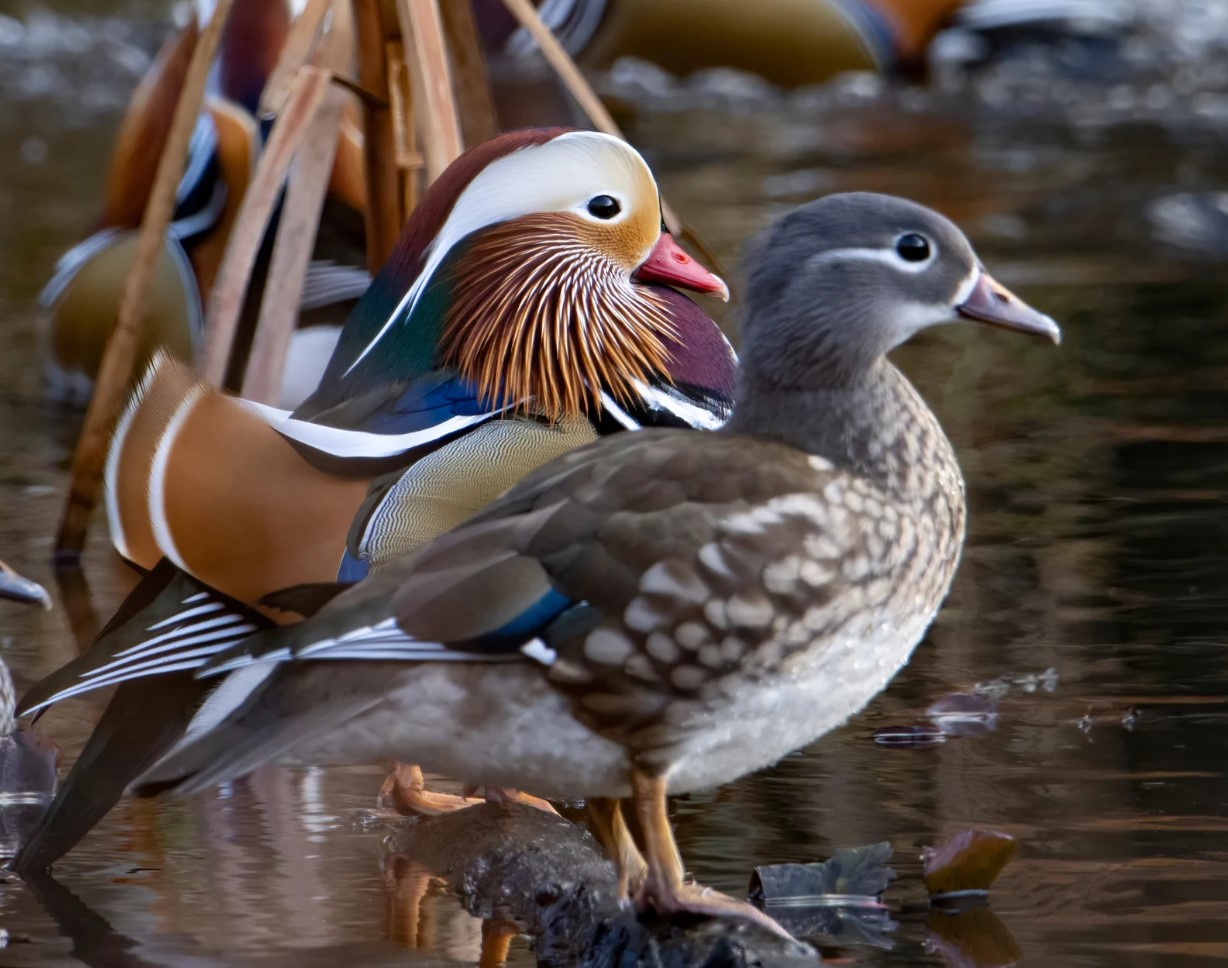
Different Types Of Duck Species Around The World
Ducks are a popular bird species that inhabit different parts of the world. They are known for their distinctive bill shape and webbed feet that enable them to swim in water. There are numerous species of ducks around the world that differ in size, color, and physical characteristics. Some of the notable species include the following:
- Mallard Ducks: Mallard ducks are one of the most common species of ducks found in North America. They have a green head, white collar, and chestnut-brown chest. Mallards are known for their adaptability to different environments and are often seen in urban parks, gardens, and ponds.
- Pekin Ducks: Pekin ducks are domesticated ducks that are commonly reared for meat production. They have a white feather and an orange bill. Pekin ducks originated from China and are popular worldwide because of their high egg-laying capacity and fast growth rate.
- Wood Ducks: Wood ducks are native to North America and are known for their striking colors. The male wood duck has a colorful plumage that consists of green, purple, and white patches, while the female has a brownish-gray body. Wood ducks nest in tree cavities near water and are often seen in forested areas.
Different types of ducks have different physical characteristics and habits that enable them to thrive in their respective habitats. For instance, diving ducks such as the canvasback and redhead ducks have stronger legs and webbed feet that enable them to dive into water and search for food. On the other hand, dabbling ducks such as the mallard and teal ducks feed on seeds and plants that grow in shallow water.
| TYPE OF DUCK | CHARACTERISTICS | HABITAT |
|---|---|---|
| Mallard Duck | Green head, white collar, chestnut-brown chest | Urban parks, gardens, ponds |
| Pekin Duck | White feather, orange bill | Domesticated |
| Wood Duck | Males have green, purple, and white patches while females have brownish-gray body | Forested areas |
In conclusion, the world is home to different types of duck species that have various physical characteristics and habits. Knowing about these different types of ducks can help you understand their unique features and appreciate them even more. Whether you enjoy birdwatching or farming, ducks’ versatility and adaptability make them a fascinating species to learn about.
The History Of Ducks As Domesticated Animals
Domestication of ducks has a long history dating back to ancient times. From serving as a source of food to becoming an integral part of cultural traditions, ducks have played an important role in the development of human societies. While wild ducks were initially hunted for meat and feathers, the idea of raising them as domesticated animals soon took root.
Different cultures around the world have their own unique ways of raising and breeding ducks. The Chinese, for instance, have been raising ducks for over 2000 years, while Europeans started domesticating ducks for meat and egg production as early as the Roman times. In North America, ducks were historically domesticated by indigenous people for ceremonial and cultural purposes.
Through selective breeding, humans have been able to create different breeds of ducks, each with distinct physical traits and characteristics. For example, Muscovy ducks are known for their unique appearance and insect-eating habit, while Pekin ducks are favored for their meat and egg-laying capabilities. Some ducks, such as the Indian Runner duck, have also been bred for their ability to lay a large number of eggs.
- Domestication of ducks started thousands of years ago
- Different cultures have their own unique ways of raising and breeding ducks
- Humans have been able to create different breeds of ducks through selective breeding
The domestication of ducks brought several benefits to human societies. Apart from serving as a source of food, ducks offered a range of other uses such as egg production, providing feathers for clothing, and even as a pest control mechanism in rice paddies. This has made ducks an integral part of many regional and cultural traditions worldwide.
Although ducks continue to be an important part of some societies, the rise of industrial agriculture has resulted in many breeds of ducks being raised under inhumane conditions. However, there has also been an increasing interest in ethical and sustainable farming, where ducks are raised in more humane conditions and allowed to live a better quality of life.
| Benefits of domestication | Drawbacks of industrial farming |
|---|---|
| Source of food | Inhumane conditions |
| Egg production | Environmental impact |
| Feathers for clothing | Health concerns (use of antibiotics and hormones) |
| Pest control | Lack of ethical standards |
Overall, the domestication of ducks has had a significant impact on human societies, both in terms of food production and cultural traditions. With ethical and sustainable farming practices, we can continue to enjoy the benefits of domesticated ducks while ensuring their well-being.
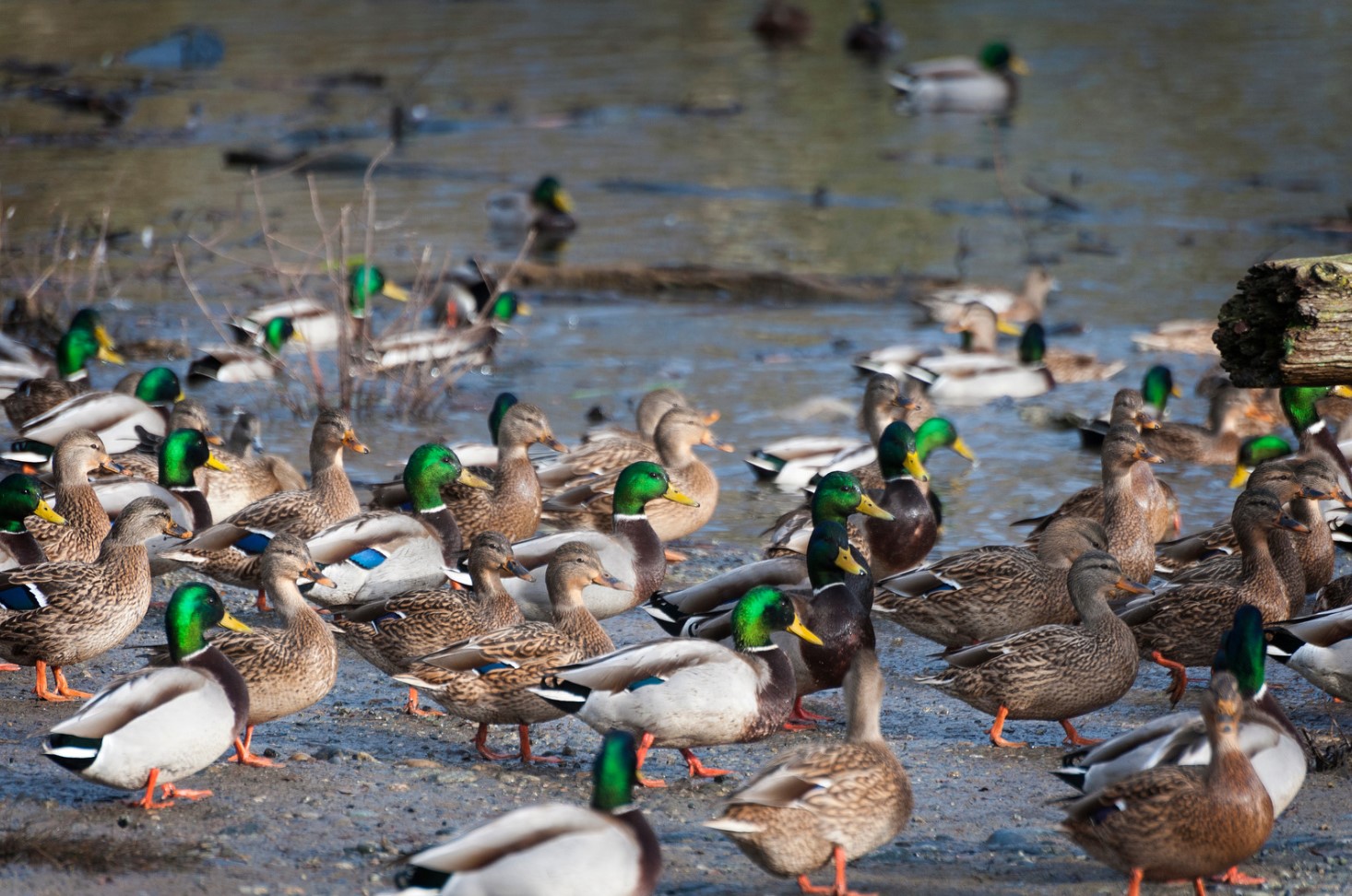
Physical Characteristics Of Ducks
When it comes to the animal kingdom, few species are as universally beloved as ducks. Whether you’re a birdwatcher or simply appreciate their cute, quacking presence in parks and ponds, it’s hard not to be charmed by these feathered creatures. But what exactly makes ducks so unique? Let’s take a closer look at some of their physical characteristics.
First of all, let’s talk feathers. Ducks are famous for their fluffy plumage, which helps keep them warm in cold water – but did you know that their feathers are also coated in a waterproof oil? This allows ducks to stay dry and buoyant, even when they’re completely submerged. The shape and color of a duck’s feathers can vary widely depending on the species; for example, male mallards have a distinctive green head and chestnut breast, while female mallards are more subdued in their brown and beige tones.
Another notable feature of ducks is their unique bill. Unlike most birds, which have sharp, pointed beaks designed for tearing flesh or crushing seeds, ducks have broad, flat bills that are specialized for filtering food from the water. Some species, such as the merganser, even have serrated edges on their bills to help them grasp slippery prey like fish. But it’s not just their bills that are unique – ducks also have special muscles that allow them to move their whole heads underwater, which comes in handy when they’re diving for food.
Duck Classification
- Diving Ducks
- Dabbling Ducks
- Sea Ducks
Of course, we can’t talk about the physical characteristics of ducks without mentioning their webbed feet. These telltale features are another adaptation to life on and around water – the webbing between the ducks’ toes helps them to paddle efficiently and maneuver through the water with ease. In fact, ducks’ feet are so well-suited to their aquatic lifestyle that they have even been used as inspiration for the design of boats and paddles!
Overall, the physical characteristics of ducks are a testament to their incredible ability to thrive in a watery world. From their waterproof feathers to their specialized bills and webbed feet, these birds are truly remarkable in their adaptability and resilience. So next time you spot a duck in the park, take a moment to appreciate all the amazing features that make these charming animals so unique.
| Subfamily | Common Name | Scientific Name | Example |
|---|---|---|---|
| Anatinae | Dabbling Ducks | Anas platyrhynchos | Mallard |
| Merginae | Sea Ducks | Mergus merganser | Common Merganser |
| Aythyinae | Diving Ducks | Aythya marila | Gadwall |
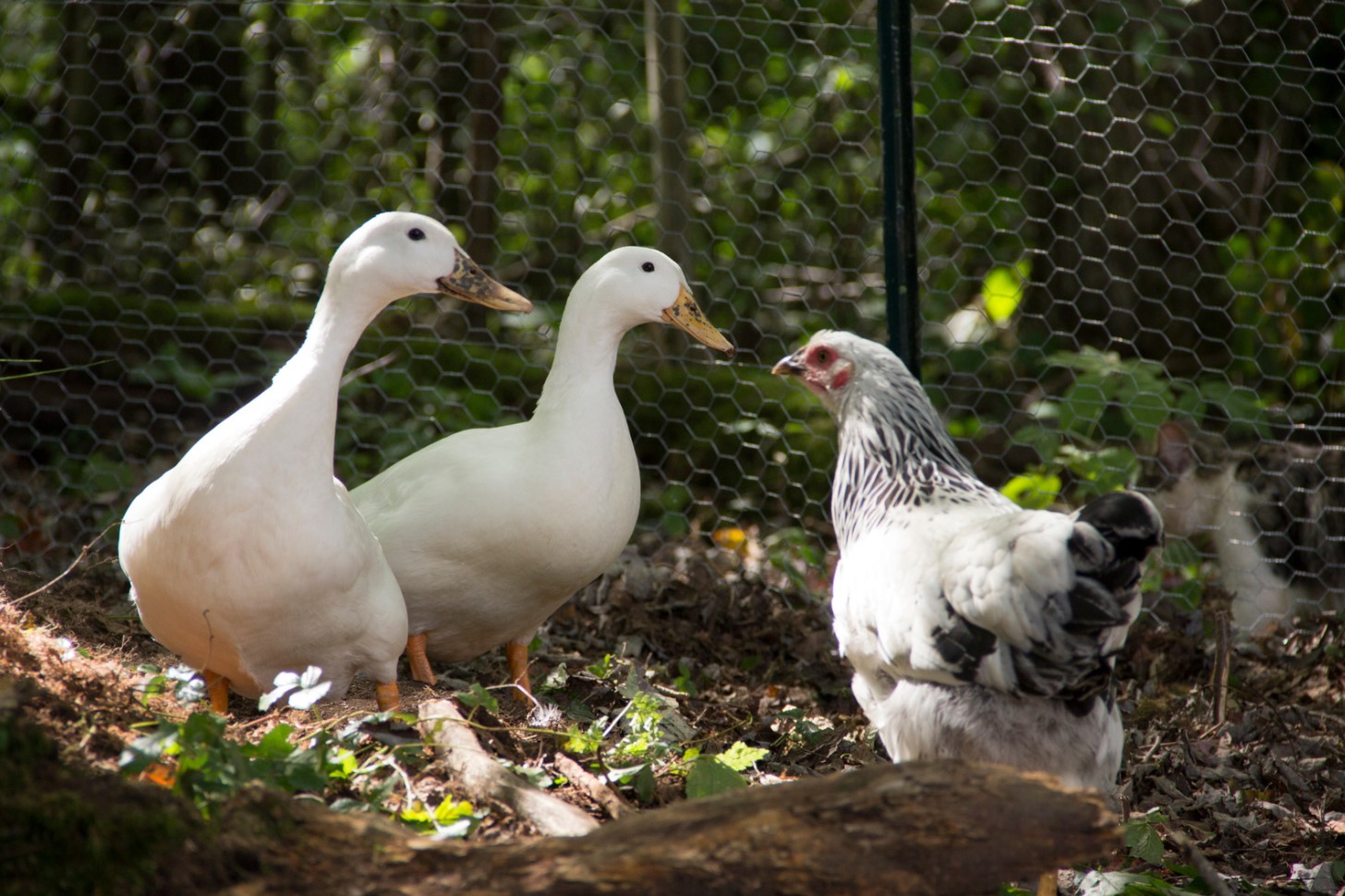
Classification Of Ducks According To Habitat
Ducks are waterfowl birds that can be found almost anywhere in the world. They are known for their oily feathers, webbed feet, and broad bills. Ducks also come in different types and species, each with unique characteristics and habitats. In this blog post, we will delve deeper into the Classification of Ducks According to Habitat.
1. Sea Ducks
Sea ducks are commonly found in coastal and offshore waters. They have specialized salt glands that enable them to remove excess salt from their bodies, and their webbed feet and waterproof feathers make them comfortable in the water. Examples of sea ducks include Eiders, Scoters, and Long-tailed ducks.
2. River Ducks
As the name suggests, river ducks are found in rivers, streams, and other freshwater sources. These ducks have broad, flat bills that help them filter food from the water. Examples include Mallards, Wood Ducks, and Wigeons.
3. Diving Ducks
Diving ducks are characterized by their ability to dive and swim underwater in search of food. These ducks have streamlined bodies, with legs set far back on their bodies, making it easier for them to propel themselves underwater. Examples of diving ducks are Canvasbacks, Redheads, and Ring-necked ducks.
4. Perching Ducks
Perching ducks, also referred to as tree ducks, are unique among ducks because they are comfortable perching on branches and in trees. These ducks have sharp claws that help them climb trees and even walk over rough surfaces. Examples of perching ducks include Mandarin ducks and Wood ducks.
5. Shelducks
Shelducks are large, colorful ducks that have a unique appearance. They have a short, broad bill and are often seen waddling rather than walking. Most species of shelducks are found in wetlands and estuaries. Examples of shelducks include the Common shelduck and the Cape shelduck.
Understanding the different habitats that ducks occupy is crucial for their conservation. It also helps in the identification and study of different duck species. Ducks are fascinating creatures that continue to capture the hearts of many.
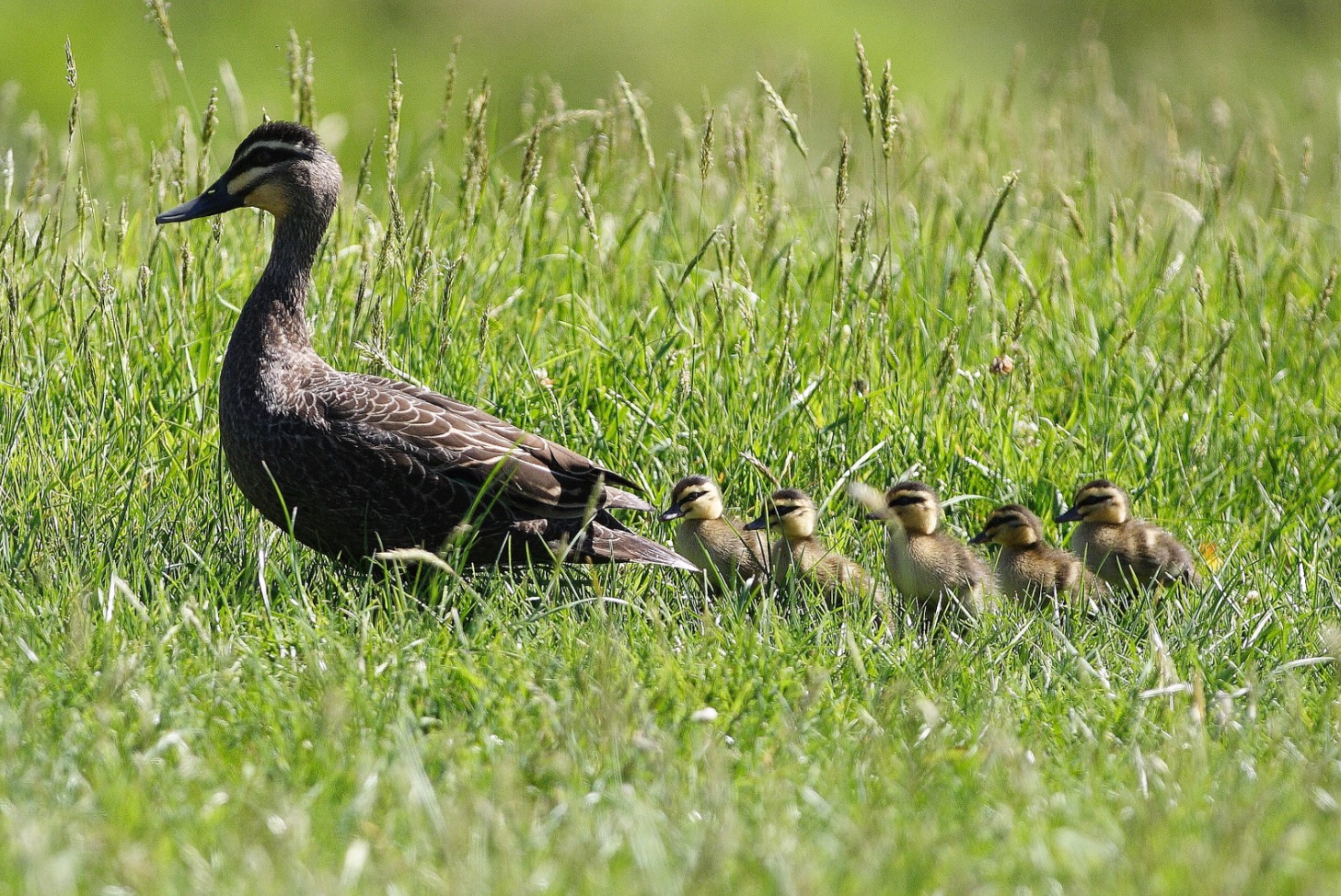
Differences Between Duck And Other Waterfowl Species
Ducks are a fascinating species of waterfowl that can be found in many different habitats around the world. While they may seem similar to other types of waterfowl, such as geese and swans, there are actually some key differences between ducks and these other species.
Physical Characteristics: One of the most obvious differences between ducks and other waterfowl species is their physical appearance. Ducks are generally smaller in size and have a rounder body shape than geese and swans. They also have a distinctive beak that is flatter and wider than the beaks of other waterfowl species. Another physical characteristic that sets ducks apart is their webbed feet, which make them excellent swimmers.
- Ducks are smaller in size than geese and swans.
- Ducks have a flatter and wider beak than other waterfowl species.
- Ducks have webbed feet, which make them excellent swimmers.
Habitat and Behavior: Ducks also have different habitats and behaviors compared to other waterfowl species. While geese and swans may be found in a variety of habitats, including lakes, rivers, and marshes, ducks are more commonly found in wetland areas, such as ponds and swamps. Additionally, ducks tend to be more sociable than other waterfowl species, often gathering in large flocks during migration.
| Ducks | Geese | Swans |
|---|---|---|
| Prefer wetland habitats | Can live in a variety of habitats | Can live in a variety of habitats |
| Tend to be more sociable | Can be solitary or form small groups | Can be solitary or form small groups |
Diet: Another difference between ducks and other waterfowl species is their diet. While geese and swans are primarily herbivores, feeding on grasses and aquatic plants, ducks have a more varied diet, which can include insects, small fish, and even small mammals. This difference in diet may be related to the size and shape of their beaks, allowing ducks to forage for a wider range of food sources.
- Ducks have a more varied diet compared to geese and swans.
- Ducks can eat insects, small fish, and even small mammals.
- Geese and swans are primarily herbivores, feeding on grasses and aquatic plants.
Overall, while ducks may seem similar to other types of waterfowl, there are some key differences that set them apart. A better understanding of these differences can help us appreciate the unique characteristics and behaviors of ducks, as well as their vital roles in ecosystems around the world.
Duck Migration Patterns And Habits
Ducks are fascinating birds that have captured the imagination of people for centuries. These birds are known for their striking colors, unique feathers, and interesting behaviors. One of the most interesting aspects of ducks is their migration patterns and habits. These birds migrate to different regions of the world in search of food and the right climate to breed.
The migration patterns of ducks are incredibly complex and varied. Some species of ducks migrate long distances to reach their breeding grounds, while others stay relatively close to their winter habitats. Ducks that migrate long distances often do so in large flocks, which can number in the thousands of birds.
During migration, ducks follow specific routes that take them across continents and oceans. These routes have been used by ducks for centuries and are usually dictated by the availability of food, water, and suitable nesting sites. Some ducks can even navigate using the stars and the Earth’s magnetic field.
- Ducks migrate to different regions of the world in search of food and the right climate to breed.
- Ducks that migrate long distances often do so in large flocks, which can number in the thousands of birds.
- During migration, ducks follow specific routes that take them across continents and oceans.
Aside from their remarkable navigation abilities, ducks are also known for their unique breeding habits. Unlike many other birds, ducks are quite social and often breed in large groups. During breeding season, male ducks will compete for the attention of female ducks by displaying their impressive feathers and vocalizations.
Ducks also have a very unique way of raising their young. After hatching, ducklings are cared for by both parents and are taught how to swim, feed, and avoid predators. This process can take several months and is an important part of the duck’s life cycle.
| Ducks Migration Patterns And Habits |
|---|
| Ducks migrate to different regions of the world in search of food and the right climate to breed. |
| Ducks that migrate long distances often do so in large flocks, which can number in the thousands of birds. |
| Ducks follow specific routes that take them across continents and oceans. |
| Male ducks will compete for the attention of female ducks during breeding season. |
| Ducklings are cared for by both parents and are taught how to swim, feed, and avoid predators. |
In conclusion, ducks are fascinating creatures with unique migration patterns and breeding habits. As humans, we can learn a lot from studying these birds and their natural cycles. By understanding more about ducks, we can better protect and conserve them for generations to come.
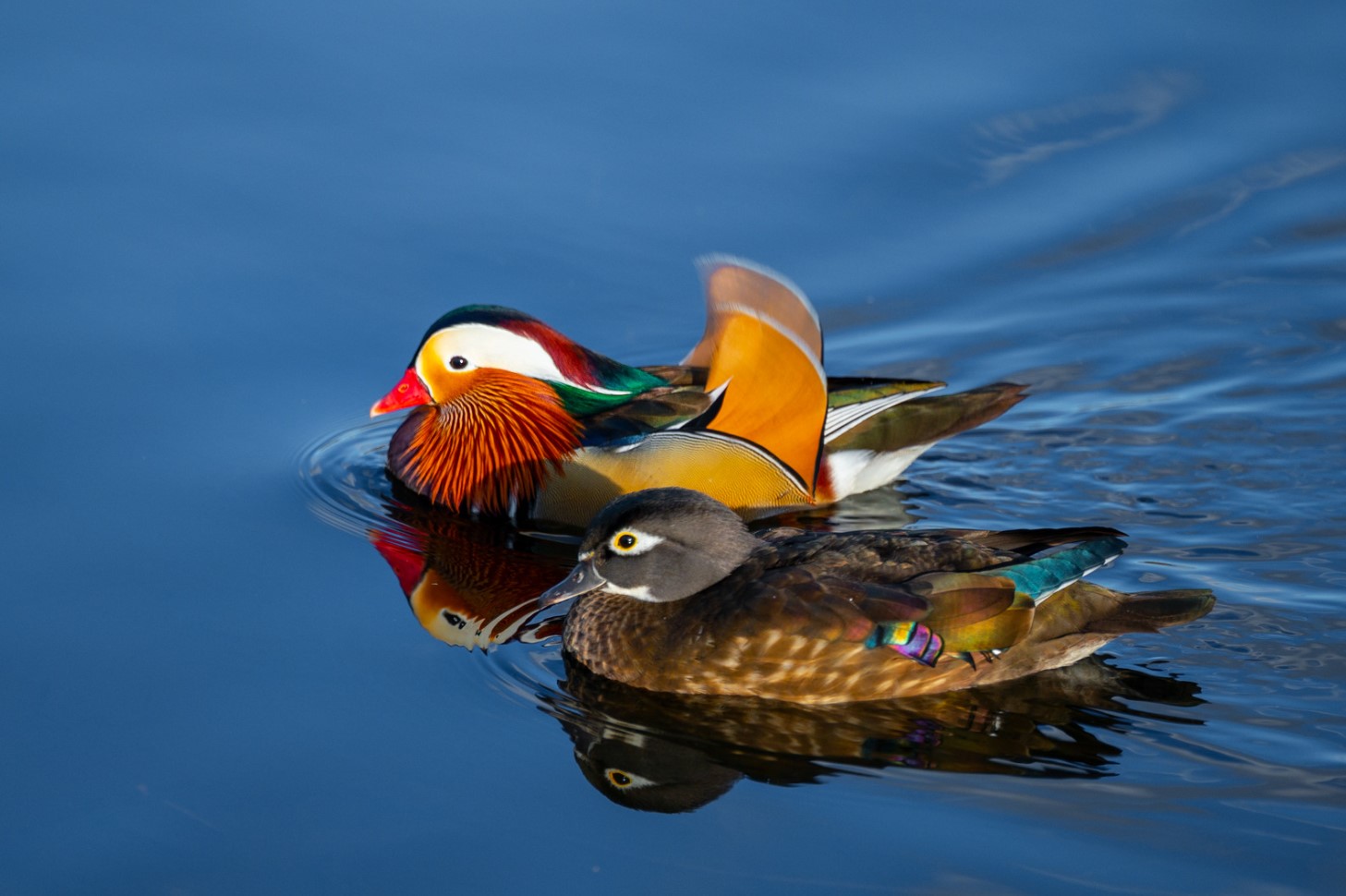
Nutritional Value Of Duck Meat And Eggs
Ducks are mostly known for their amusing antics and their association with water. However, beyond their hilarious quacks and waddles, ducks are a very valuable bird species. They have been domesticated for centuries and are raised for their eggs, meat, and feathers. In this blog post, we will delve into the delicious nutritional attributes of duck meat and eggs.
Duck meat: Unlike chickens, ducks are larger, have more fat, and a distinct flavour. Duck meat is dark, tender, and has a rich taste. It is a great source of nutrition as it is packed with minerals like potassium and iron, and vitamins like B6 and B12. Duck meat contains a lesser amount of fat than what people think, and there is no need to shy away from it. In fact, it is a healthier alternative to chicken. Duck meat also has an ample amount of protein and is low in cholesterol.
- Duck Meat contains potassium and iron in high quantity
- It has low fat and cholesterol but high-protein value
Duck eggs: Duck eggs are often used in baking and cooking as they are richer and creamier than chicken eggs. They are enriched with vitamins like A, D, and E, and minerals like iron, calcium, and phosphorus. The protein content in duck eggs is higher than that of chicken eggs, which makes them an excellent source of protein. They also contain Omega-3 fatty acids which are beneficial for brain and joint health.
- Duck eggs are richer and creamier than chicken eggs
- Duck eggs have high protein and Omega-3 fatty acids
- They are enriched with vitamins and minerals like iron, calcium and phosphorus
In conclusion, ducks are a valuable bird species that provides good nutrition for humans. Whether you use duck eggs in your baking, or duck meat in your cooking, they provide a good source of vitamins, minerals, and protein. Next time you’re at the grocery store, consider picking up some delicious duck meat and eggs to incorporate them into your diet.
Importance Of Ducks İn The Wild And Their Ecological İmpact
Ducks are one of the most fascinating species in the wild, with their unique characteristics and quacking sound. They are aquatic birds that are found in different parts of the world. They can be found in natural water bodies such as rivers, ponds, lakes, and wetlands. They are also domesticated for commercial purposes. The importance of ducks in the wild cannot be overemphasized as they play a significant role in the ecosystem.
Ecological impact of ducks includes helping to regulate the ecosystem by controlling the population of aquatic insects, larvae, and other invertebrates. Ducks are known to feed on insects such as mosquitoes, midges, and flies, thereby reducing their population in the ecosystem. They also help to disperse seeds of aquatic plants by consuming and excreting them. This helps to maintain biodiversity and stabilize the ecosystem.
- Ducks contribute to water filtration: Their feeding habits contribute to the health of aquatic ecosystems by helping to filter and clean water within the ecosystem.
- They are indicators of a healthy ecosystem: As with any organism, ducks require a healthy environment to survive. Therefore, the presence of healthy duck populations is an indication of a healthy ecosystem.
- Ducks provide food for predators in the ecosystem: They are an important food source for several predators, including snakes, alligators, and humans.
| Duck Species | Habitat | Ecological Role |
|---|---|---|
| Muscovy Duck | Near water sources in the tropics of South America and Mexico | Helps control pests, provides food for predators |
| Wood Duck | Forest and wooded wetlands in North America | Important indicator of wetland habitat, provides food for predators |
| Mallard Duck | Wetlands and grasslands across North America, Europe, and Asia | Seed dispersal, helps maintain biodiversity, provides food for predators |
The importance of ducks in the wild cannot be overstated, as they contribute to a balanced ecosystem. It is important to ensure their conservation by providing protected habitats and regulating hunting activities to prevent overexploitation. Ducks are a valuable resource that should be preserved for generations to come.
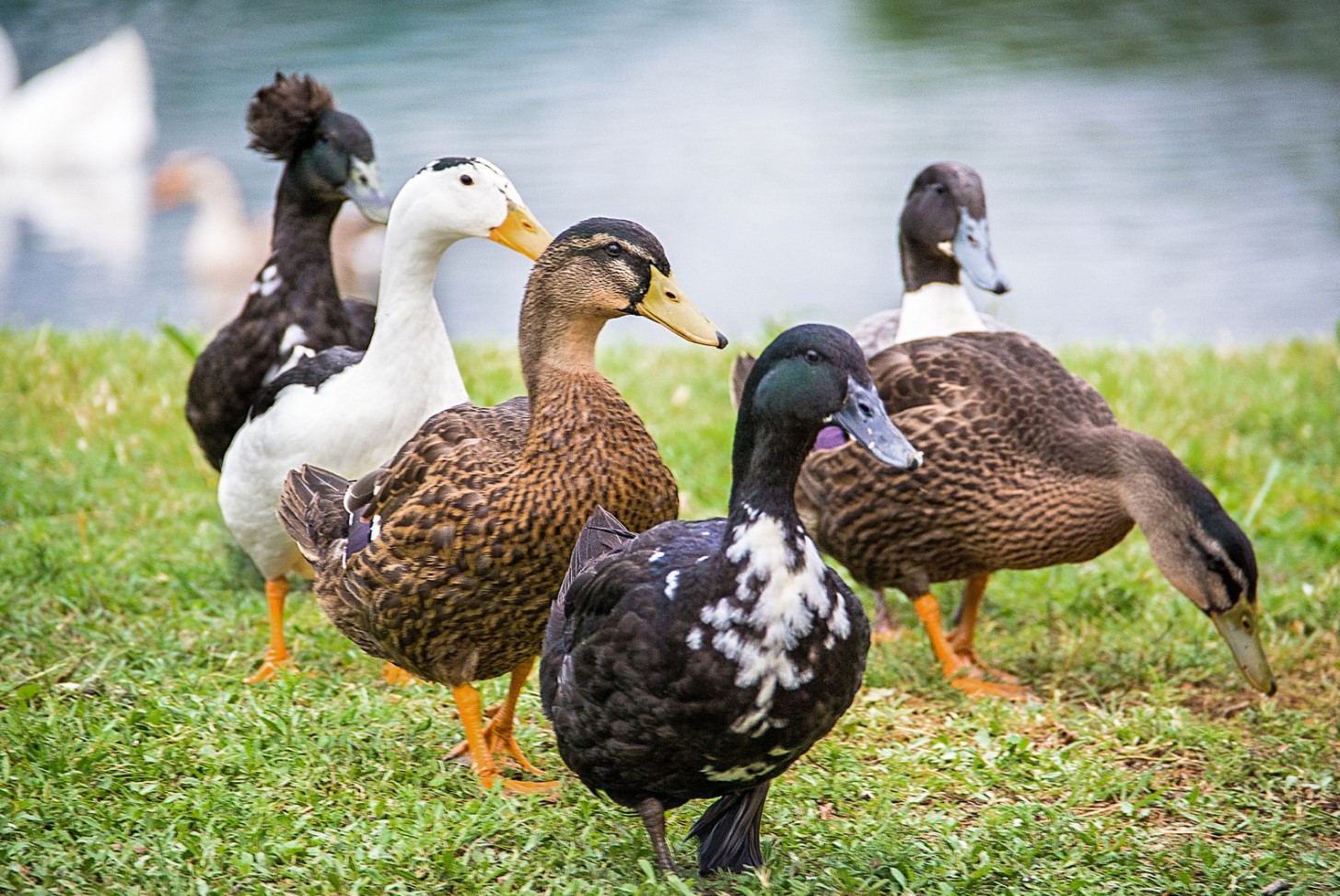
Farming Ducks For Commercial Purposes
Duck farming has been around for centuries and has gained popularity in recent years, especially for commercial purposes. Ducks are farmed for their meat, eggs, and feathers, making it one of the most profitable livestock businesses. In this blog post, we will explore the different aspects of farming ducks for commercial purposes.
-
- Type of Ducks for Farming
There are various types of ducks for farming, but the most suitable breeds for commercial purposes are Pekin, Muscovy, and Rouen ducks. Pekin ducks are one of the most popular breeds, as they are easy to raise, grow quickly, and have a good feed conversion rate. Muscovy ducks have lean meat and are popular for their unique flavor, whereas Rouen ducks are larger and mostly kept for their meat.
| Housing Requirements |
| Proper housing is crucial for duck farming. Ducks need a clean and dry environment, with enough space to move around. The housing should have good ventilation, proper lighting, and a clean water source. It is essential to keep the ducks safe from predators and disease by fencing or netting the housing area. |
-
- Feed and Nutrition
Ducks are omnivorous and can consume various feed types, including commercial feed, grains, vegetables, and insects. A balanced diet is essential for the ducks to grow healthy and produce quality eggs and meat. Protein-rich feeds like soybean meal and fish meal are crucial for muscle development in ducks.
Running a successful duck farm for commercial purposes requires proper planning, management, and marketing strategies. With the high demand for duck meat and eggs in the market, duck farming can be a profitable business venture.
The Role Of Ducks İn Cultural Traditions And Folklore
Throughout history, ducks have played an important role in cultural traditions and folklore around the world. Ducks have been featured in various stories, poems, and songs, each imparting different meanings and symbolisms. In this blog post, we’ll explore some of the cultural significance of ducks and how they have shaped our perceptions of these fascinating birds.
In many cultures, ducks are seen as symbols of good luck and prosperity. For example, in Chinese culture, ducks represent fidelity and happiness in marriage, while in Japan, ducks are believed to bring good fortune and successful relationships. In other cultures, ducks are associated with fertility and motherhood, such as in ancient Egyptian mythology where the goddess Isis is often depicted with a duck’s head.
- One famous example of ducks in folklore is the story of the Ugly Duckling.
- This classic tale by Hans Christian Andersen tells the story of a young duckling ridiculed for his appearance, only to discover he was a beautiful swan all along.
- The story has become a symbol for self-discovery and acceptance, and has been adapted into numerous films, plays, and children’s books.
Another popular folk tradition involving ducks is the annual duck race. In this event, rubber ducks are released into a river or stream and race to the finish line, often to raise money for charity. The duck race has become a widely recognized symbol of community engagement and support.
| Type of Duck | Country of Origin |
|---|---|
| Muscovy Duck | Mexico |
| Pekin Duck | China |
| Rouen Duck | France |
Ducks have also been featured in art and literature for centuries, from the ancient Greeks to modern-day poets. Dutch artist Vincent van Gogh famously painted “Two Ducks on a Pond” in 1886, depicting two ducks floating serenely on a pond. In contemporary fiction, ducks are often used as metaphors for various themes, such as in Haruki Murakami’s novel “Dance Dance Dance.”
In conclusion, ducks have played a significant role in cultural traditions and folklore throughout history. Their symbolic meanings and associations have influenced various aspects of human life, from art and literature to community events and celebrations. As we continue to study and appreciate these fascinating birds, it’s important to recognize their cultural significance and honor their place in our collective heritage.
Duck Hunting And İts İmpact On The Species
Ducks are a common species that exist all around the world today. They are loved and appreciated for their unique and quirk personalities, which often make them the subject of fun and enjoyment. Duck hunting, however, is one human activity that may negatively impact the populations of ducks. Although hunters often justify this activity, arguing that it is necessary for biodiversity, it still remains a controversial issue.
Duck hunting, when done excessively, can lead to the extinction of certain duck species. Several ducks, such as the Redhead and Pintail ducks, for example, are experiencing a decline in population count due to their overhunting. These populations can only recover if hunters exercise responsibility and regulation by adhering to sustainable hunting practices.
- Duck hunting also involves the use of firearms and ammunition, which may cause injuries or death not only to ducks but also to other wildlife species. It is, therefore, important to practice safe hunting practices and to enforce strict regulations on the possession and use of firearms.
- Furthermore, the indiscriminate use of lead shot in hunting areas has led to environmental concerns as it can cause Lead Poisoning in ducks and other birds that consume them. Substituting lead shots for alternative materials like steel or tungsten can be helpful in curbing this problem.
| Duck Hunting Practices To Protect The Species |
|---|
| Adhere to strict regulation of hunting seasons and bag limits to ensure sustainability and conservation of the duck species. |
| Use alternative materials for hunting ammunition instead of lead, which are safer for both the hunters and the ducks. |
| Be mindful of the environment and other wildlife species while hunting ducks by following safe hunting practices and regulations. |
In conclusion, Duck hunting has some potential advantages as well as disadvantages. If hunting is done sustainably and with strict regulations, it can result in a more enriched ecosystem. On the other hand, if done excessively or irresponsibly, it could harm Duck species’ survival chances and the environment at large. It is, therefore, imperative that hunters follow strict hunting regulations and implement sustainable practices that will protect the species and conserve their habitats.
The Potential Of Ducks İn Biomedical Research
For many people, ducks are seen as cute, feathered creatures that populate the ponds and lakes of parks and gardens. However, for scientists, ducks represent a valuable resource for biomedical research, with potential benefits for human health. In this blog post, we will explore the potential of ducks in biomedical research and the key findings that have resulted from such investigations.
- The immune system of ducks
- As a model for influenza research
- Duck stem cells and their regenerative abilities
One of the key features that make ducks so valuable for biomedical research is their unique immune system. Unlike most other animals, including humans, ducks are able to tolerate and even thrive when infected with multiple strains of influenza virus. This makes them an important model for studying the mechanisms underlying viral evolution and host-pathogen interactions.
Moreover, duck stem cells have shown great potential for use in regenerative medicine. These cells have the ability to differentiate into a range of different cell types – including nerve cells, heart cells, and liver cells – making them ideal for use in transplantation and tissue engineering.
| Advantages of using ducks in biomedical research | Disadvantages of using ducks in biomedical research |
|---|---|
| Excellent model for studying viral evolution and host-pathogen interactions | Can be difficult to obtain large numbers of ducks for research purposes |
| Possess unique immune system that can tolerate multiple strains of influenza virus | Not all findings from research using ducks may be applicable to humans |
| Duck stem cells show great potential for use in regenerative medicine |
However, there are also some potential drawbacks to using ducks in biomedical research. For example, it can be difficult to obtain large numbers of ducks for use in experiments, and not all findings from research using ducks may be directly applicable to humans.
Despite these limitations, the potential of ducks in biomedical research is clear. Whether it is through the study of the immune system or the use of stem cells for regenerative medicine, these feathered creatures are likely to continue to play an important role in the advancement of human health in the years to come.
Conservation Efforts For Endangered Duck Species
Ducks are not only adorable but also have a vital role to play in our ecosystem. They are important members of our planet’s wetlands, freshwater systems, and oceans. While ducks are generally not classified as endangered, there are a few species that need conservation efforts.
The North American Black Duck is one such species that requires attention. The Black Duck population has been dropping in the last few decades due to habitat loss and hunting, which is because of its similarity to the Mallard duck, leading to it being mistakenly hunted. The conservation efforts for this species involve the restoration of wetlands and the development and distribution of educational materials for hunters. This effort will aid in the avoidance of accidentally shooting Black Ducks, allowing the population to rebound.
The Harlequin Duck, on the other hand, is another species that needs conservation efforts. This duck resides in Canada and is declining in number because of its habitat loss due to land usage and water pollution. The conservation efforts for the Harlequin duck include the restoration of its habitat and training local people on better farming practices to avoid pollution of the waterways.
- The country of Iceland has created protected areas for its Icelandic Duck population to safeguard the existing habitat and improve the breeding population.
- Another example is the conservation effort for the Madagascar Pochard, which focuses on improving its habitat to sustain its large-scale population growth.
The efforts to conserve these endangered species of ducks can be challenging due to factors such as hunting, pollution, and habitat loss. Hence the need to create awareness among people on the importance of preserving these endangered ducks. By protecting these species, there will be a reduction in their decline in population, ultimately preserving the planet’s biodiversity.
Future Prospects For Duck Farming And Research
With the ongoing global concerns on food security and sustainability, it is essential to explore alternative sources of food production. One of the most promising is the farming of ducks for commercial purposes. Duck farming is becoming increasingly popular because of its unique benefits, such as easy management, high reproductive rate, and ability to produce high-quality meat and eggs. However, as the demand for duck products increases, so have the challenges and opportunities that face the industry.
The future prospects for duck farming are bright, and innovative technologies are emerging to promote efficient production systems. One of such developments is the use of precision agriculture, which utilizes sensors and monitoring systems to collect data that helps farmers to optimize production. A significant advantage of precision agriculture is that it helps to reduce waste and increase yield while maintaining environmental sustainability.
- The use of advanced genetics is also proving to be a game-changer in the future of duck farming. Innovative breeding techniques, such as gene editing, can enhance the desirable traits of ducks, such as growth rate, feed efficiency, and resistance to diseases.
- Furthermore, the adoption of automation technologies, such as robotics and sensors, is promising to revolutionize how ducks are reared, monitored and processed. Robotics systems can improve the accuracy and efficiency of tasks such as cleaning, feeding, and monitoring, contributing to reduced costs and improved animal welfare.
The future of duck farming is also bright in terms of research. Ducks have been used as models for studying human diseases such as influenza, due to their physiological similarities to humans. The study of the genetic makeup of ducks is also essential in uncovering new disease-resistant genes, which can be utilized to improve human health.
In conclusion, the future of duck farming and research is promising, and emerging technologies provide hope for sustainable and efficient production. However, it is essential to ensure that the growth and development of the industry are balanced with the welfare of the animals and the surrounding environment. By being innovative and responsible, duck farming can contribute to global food security and enhance our understanding of human health.